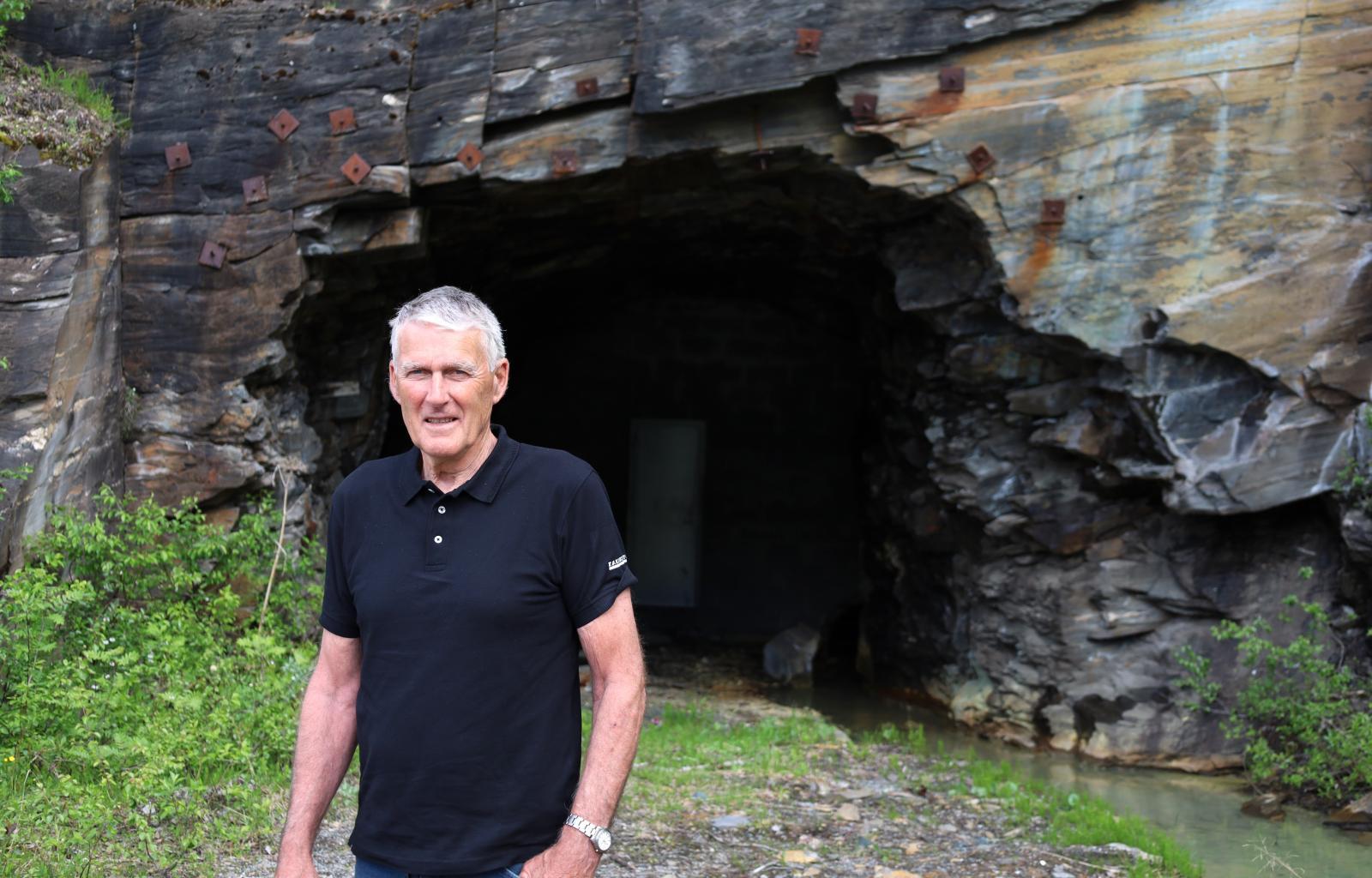New Sulitjelma Mines One Step Further Toward Opening One of Few Metal Mines in the North
High North News (Sulitjelma): About 30 years after the historical mines in Sulitjelma, Northern Norway, closed down, work is now in full swing in order to start up new operations. "Europe needs minerals. When most things are to be electrified, copper will be very important," says the manager of Nye Sulitjelma Gruver, Størker Bjørnstad, to High North News.
Over 30 years have passed since copper was last extracted in Sulitjelma in Fauske municipality, Northern Norway. In 1991, the mines were shut down due to poor profitability and declining copper prices.
The empty old crushing plant and the mineral processing plant still stand, now featuring broken windows and graffiti on the walls. Despite the dilapidation, the robust buildings are still suitable for copper extraction – after a few rounds of renovation, cleaning, and purchasing new machines and equipment.
That is stated by manager Størker Bjørnstad of Nye Sulitjelma Gruver [New Sulitjelma Mines, ed. translation] to High North News. We meet him in the old industrial area in the mountain village, close to the Swedish border.
The mining company Nye Sulitjelma Gruver is owned by Bjørnstad and other persons and companies based in Fauske municipality. Since 2011, they have been working to start new operations in the historical mining ground.
A critical raw material
"Europe needs minerals. When most things are to be electrified, copper will be very important. The prognosis is that the copper production in the world will double in 10-20 years," says Bjørnstad.
Copper prices are currently on the rise and are at about NOK 100. When the mine was closed, the price was about NOK 10.
A significant increase is expected in the next two years due to the green shift.
Bjørnstad further highlights the EU's dependency on the import of critical raw materials, for example, from China, which accounts for 60 percent of the production and 90 percent of the processing of so-called rare earth elements.
"China controls much of this market. The EU has an ambition to become more self-sufficient and has presented a new critical minerals act which involves starting up mines quicker and easier. It will be exciting to see how Norway adapts to this," he adds.
A step on the way
"Bureaucracy has been a challenge for us. Much time has been spent waiting. Starting up mines is a long process in Norway today," he continues.
Recently however, one of the pieces fell into place.
The company got notice from the Ministry of Trade, Industry and Fisheries that they are allowed to take over the mining tunnel, Rupsi Stoll, from the state. The decision went against the Norwegian Directorate of Mining's decision.
"Gaining access to this tunnel is very important to us. Now that we have received approval from the Ministry of Trade, Industry and Fisheries to take over the tunnel, a major element of uncertainty is gone."
What purpose will the mining tunnel serve?
"We have the right to extract ore from several mining fields in Sulitjelma, and one is located below the tunnel."
The tunnel reaches 400 meters into the mountain, over the so-called Rupsi deposit, which has not been extracted from earlier."
"The plan is to expand the tunnel one kilometer into the mountain. The idea is that the tunnel will be used to enter the mining operation. We will also use it when mapping what is under the tunnel," explains Bjørnstad and adds:
"This way, we can find out how large the quantities there are and also make a resource model of the deposit. It is important for future investors that we document the right amounts we are dealing with here."
Langvatnet, Sulitjelma
The former railway stretch between Sulitjelma and Finneid was located on the road to the right. It was built to transport ore.
The railway line was demolished in 1972.
More to be organized
Taking over the tunnel was an important step for the company, but several things remain before a new start-up can be realized.
"The emission permit is not yet in place. We sent the application four years ago," continues Bjørnstad.
"We have been in several meetings and have an ongoing dialogue, and we hope to have the emission permit this year."
Plans for disposal
The emission permit concerns the tailings the company plans to dispose of at a depth of about 30 meters in Langvatnet lake.
The tailings are waste materials left after the crushed ore at the mineral processing plant.
What plans do you have to ensure the least possible pollution during disposal in Langvatnet?
"The copper ore in Sulitjelma contains a lot of sulfur, and if the tailings are stored in the open air, water and air will enter and contribute to the formation of sulfuric acid in the landfill. Sulfuric acid will dissolve and create pollution," explains Bjørnstad and elaborates:
"If you deposit the tailings underwater, you stop this process."
"We have documented that the pollution will be minimal compared to the pollution problem that is currently there from earlier mining operations. The state is responsible for the latter, and we have tried to avoid the pollution from old mines so as not to mix this together."
He also specifies that there are requirements for disposing of gangue, the commercially worthless material that surrounds or is closely mixed with a desired mineral in an ore deposit.
"The mining industry has changed a lot since earlier operations. There is a major focus on the environment, and the mining operations are to be cleaner. The industry takes this very seriously," specifies Bjørnstad.
Could start up in 2030
After the emission permit, an operating license and investors must be secured.
"Nye Sulitjelma Gruver is currently not fully financed. A major financing process must take place here," says Bjørnstad.
How much do you think the investments will amount to?
"We expect the investments to be about NOK 900 million."
"We have a plan and hope to be operating in about five to six years, in 2030, if things fall into place. But permits and the formalities take time," he states.
If the mining operation is re-initiated, Bjørnstad says the company will employ about 80 people.
"That is in addition to purchasing many services, such as transport, service, and subcontractors. This will increase the number of hires by about fifty percent."
How significant will this industrial investment be for this region?
"This will mean a lot for Fauske municipality and the district. More jobs are needed to help the municipal economy. To Fauske municipality, value creation and jobs will be helpful to get out of the financial situation."
Fauske municipality has been very positive toward this project, and we feel that all parties are cheering for a new start-up. This being unanimous is very significant," he concludes.
The mining operations in Sulitjelma
Sulitjelma gruber was a Norwegian mining company that extracted copper and zinc in Sulitjelma, east in Fauske municipality in Northern Norway.
The small town has about 400 inhabitants.
The mining operations began in the late 1800s and the operation was registered for a Swedish company for a period.
From 1933 to 1983, the company was registered as Norwegian.
The Norwegian state took over the operation in 1983 until its closure in 1991.
In the early 20th century, the mining company was Norway's largest copper producer and quarry.
Nye Sulitjelma Gruver plans new mining operations in Sulitjelma. The sales products will be copper and zinc.







